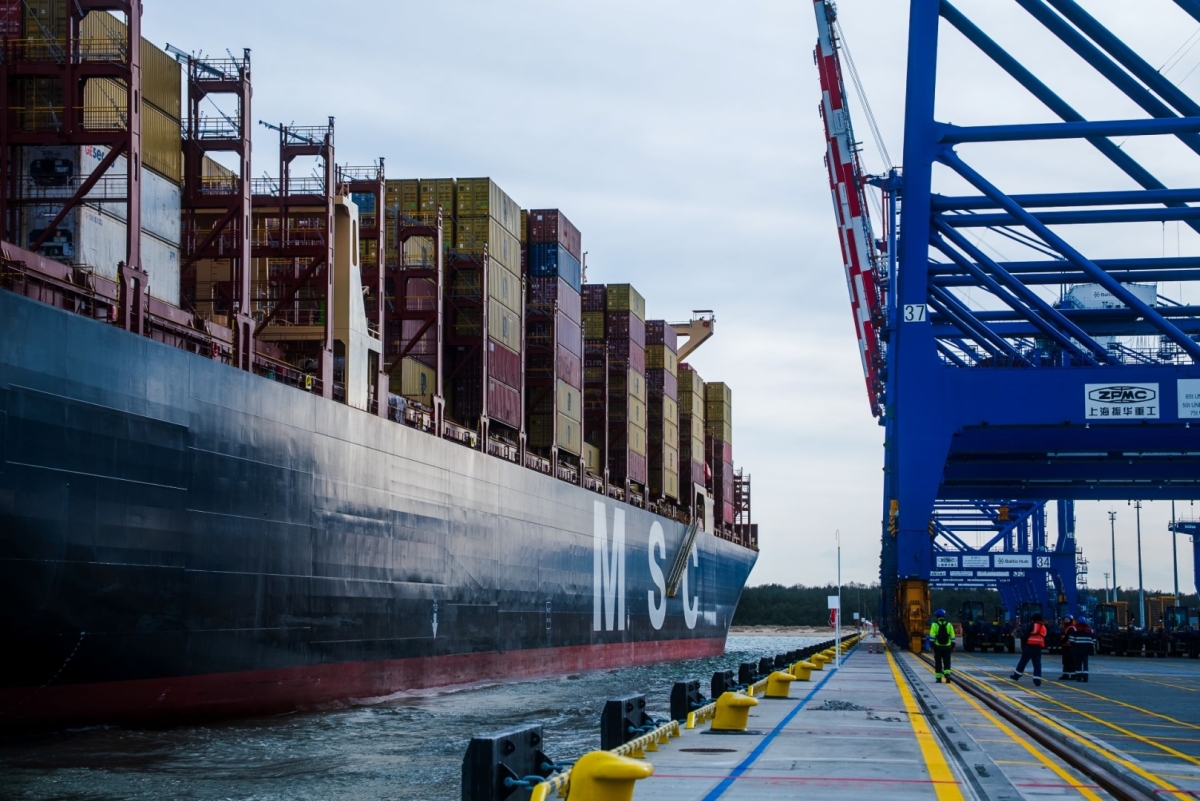
The ports of Gdańsk and Gdynia have summarized their cargo handling results for the first quarter of 2025. Of particular note is the significant increase in container throughput.
The first quarter proved solid for both Tricity ports. Although both ports saw slight downward adjustments in total tonnage, several key cargo groups – notably containers in both Gdańsk and Gdynia – experienced noticeable growth.
The Port of Gdynia reported that Q1 handling reached 6.31 million tons – a 2.6% decrease compared to last year, though far from alarming. Especially since key cargo groups for the port recorded growth. In the first three months of the year, Gdynia handled 16.6% more general cargo, which remains the port's core category and totaled 4.28 million tons – the clear majority. Even more impressive was the growth in containerized cargo, which increased by as much as 26.5% year-on-year. Between January and March 2025, Gdynia’s terminals handled 278,432 TEUs. The port also noted that the strongest increases occurred in March – general cargo grew 21.2% year-on-year, while containers surged by 39.5%.
There was also growth in the ferry and ro-ro segment – up 8.07% over the quarter, and nearly 16% in March alone.
The overall decrease in total handled tonnage is explained by reduced handling of grain (down 33.7%) and coal and coke (down 32.4%). These drops are likely corrections following previously inflated figures caused by the outbreak of war in Ukraine. The port itself stated that these volumes are returning to pre-invasion levels. It’s also worth noting that Gdynia handled 15% less crude oil and petroleum products in Q1 2025.
A similar situation is seen at the Port of Gdańsk. While there was also a slight overall decrease in total tonnage – about 2% – several cargo categories experienced strong growth. With total throughput exceeding 18.4 million tons, the Port of Gdańsk strengthened its position as the container leader on the Baltic – over 642,000 TEUs were handled, 17% more than the previous year. March proved to be pivotal here as well – Baltic Hub reported a record-breaking month, with 222,712 TEUs handled.
Ore throughput also surged – by a remarkable 560%. The Port of Gdańsk attributes this in part to increased iron ore imports to meet the demands of the steel industry in Poland and neighboring countries. Timber handling grew by 74%. Most of it originates from Latvia and is shipped from Gdańsk to Scandinavia and Asia. However, this high percentage increase is the result of a low base effect – only 7.6 thousand tons were handled last year, compared to 13.2 thousand tons this year.
As in Gdynia, Gdańsk saw declines in coal (down 14.8%), liquid fuels (down 7.5%), and grain (down 21%).
These developments are partly due to infrastructure improvements, which are directly strengthening the Port of Gdańsk’s role in the international supply chain. The steadily growing number of connections and new ocean services, operated by the world’s largest container ships, also play a significant role.


